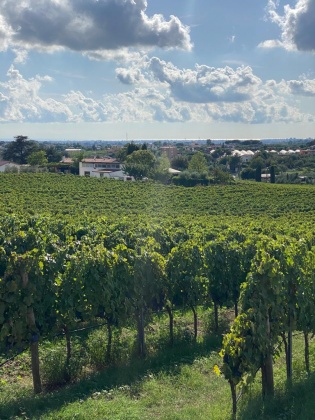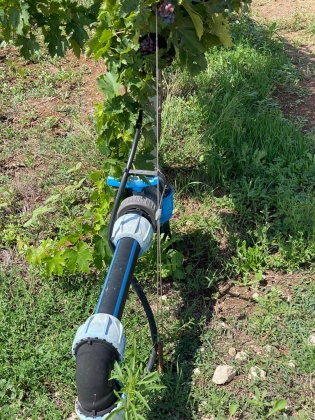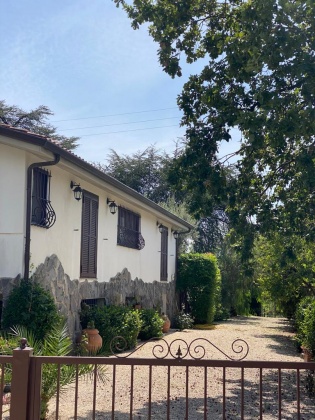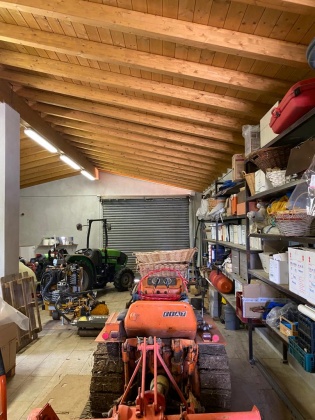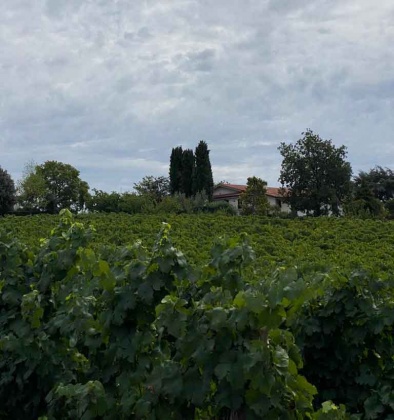15 (fifteen) organic hectares, on a single plot of land, entirely fenced.
The surface is suitable for any type of crop, currently cultivated with vineyards (8 ha) and olive groves (about 2 ha).
Inside the farm there are various buildings:
one is used as office; it has a tasting room and it is equipped with a kitchen, bathroom and dressing room.
Another one is a 170sqm warehouse, where all vehicles and equipment are recovered.
The biggest building is the main villa; about 400sqm on two levels, completely fenced and surrounded by its own garden.
There is a canopy for car parking.
Some small warehouses for gardening equipment.
Two artesian wells, one serving the buildings, the other for the vineyard.
Vineyard
Varietals grown in vineyards are divided as follows:
2 hectares of Trebbiano Verde, Malvasia di Candia, Malvasia Puntinata;
3 hectares Cesanese;
1 hectare Syrah;
2 hectares Montepulciano;
Olive grove
Plants are traditional olive trees, not intensive implantation, with mixed varieties; mainly are Frantoio, Leccino and Pendolino.
This diversity promotes high quality and correct pollination of plants.
From the olives produced, the result is a superior quality Extra Virgin Olive Oil.
Inside the farm there are 18 (eighteen) swarms of bees, with their hives and all the equipment for organic honey production.
All swarms are reported and registered with the competent veterinary ASL, with a regular company code issued by the Lazio Region.
Bamboo
In May 2022 one hectare of giant bamboo has been planted.
Economic exploitation
Vineyard
Today, the main source of income comes from the sale of grapes.
Thanks to the varieties planted, the grapes produced find space in a medium/high-level market.
Cesanese and Syrah, deriving from organic farming, are not so common in the Lazio region.
Then, by combining some varieties, it is possible to claim DOC wines.
DOC wine, which is most increasing for export demand, is the DOC Roma. On the farm it is possible to produce up to 400 quintals of (red) grapes of the latter product.
The vineyard has been planting and cultivating with the purpose of producing high quality grapes; with low production yields and high sugar levels.
This high quality of grapes makes them easily sellable, even at higher prices compared to the average regional market.
All eight hectares of vineyards have a drip irrigation system. This prevents water shocks to the plants, guaranteeing healthy and ripe grapes even in particularly dry and rain-free seasons for prolonged periods.
The vineyard has all the canons of modern cultivation, of young age, between 4 and 15 years. The whole system is “a spalliera“, suitable for mechanized processing (harvesting, pre-pruning, fertilizing, topping, etc.), allowing a reduction in time and, therefore, management costs.
Production at full capacity amounts to a total of 1,200 quintals of grapes (120,000 kilos). These make possible to obtain about 1,000 hectolitres (100,000 litres) of wine; meaning 130,000 750ml bottles.
Olive grove
The farm has about 500 olive trees of different varieties; mainly: Frantoio, Leccino and Pendolino.
This diversity allows constant production over time and correct pollination of all plants.
Up today there are about 300 plants in full production. The rest were planted 5/6 years ago and therefore not yet at full capacity.
In the space of 3/4 years it is estimated to have a production between 70 and 100 quintals (10,000 kilos) of Organic olives.
The olive grove allows the production of superior quality Extra Virgin Olive Oil.
The quantity of oil produced can vary from year to year; the yield is, on average, at 10%/13%. It means that 10,000 kilos, on average, produces 1,000/1,300 litres of oil.
The milling is entrusted to an external mill, with which it is easy to find commercial agreements for the direct sale of the olives too.
Again, given the quality and organic recognition, the selling price is on average higher than the regional market.
Honey
There are currently eighteen swarms of bees on the farm.
The honey produced is the so called “Millefiori”. Production is granted thanks to the many varieties of plants and trees present throughout the farm. In fact, not only vines and olive trees, but fruit trees, roses, lavender plants and flowers to adorn the entire estate are cultivated too.
The total organic management of the company is an optimal element for the life of bees. There is therefore no risk of poisoning or pollen pollution.
All the honey produced is easily sold on all types of markets: restaurants, retail shops, and private customers.
Bamboo
In May 2022 one hectare of giant bamboo has been planted.
It will reach the full production capacity in 2025/26, with a potential high income for the farm. In addition, for next 30 years, a fixed amount of money will be given to the farm, thanks to the bamboo high absorption of CO2.
This investment was made by the farm to further diversify its income and cultivations.
Farm is located in the heart of the Castelli Romani
Albano

